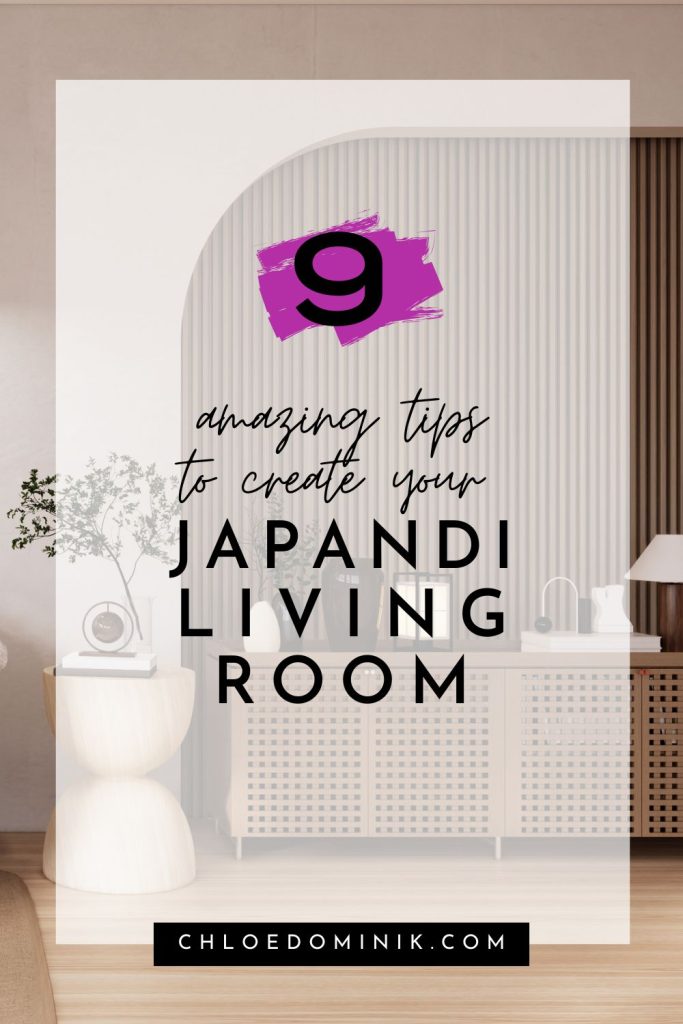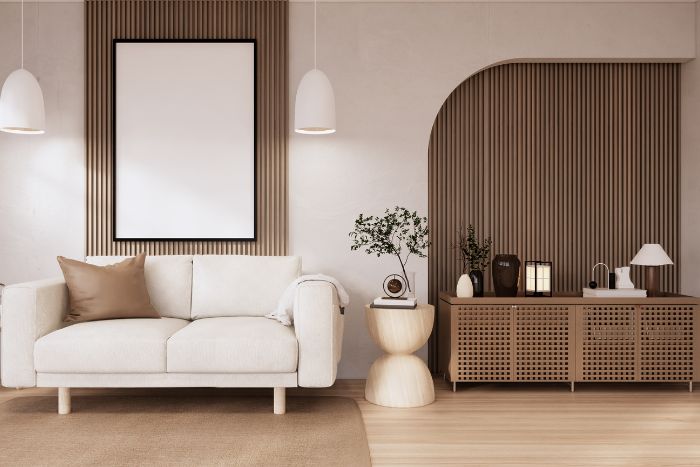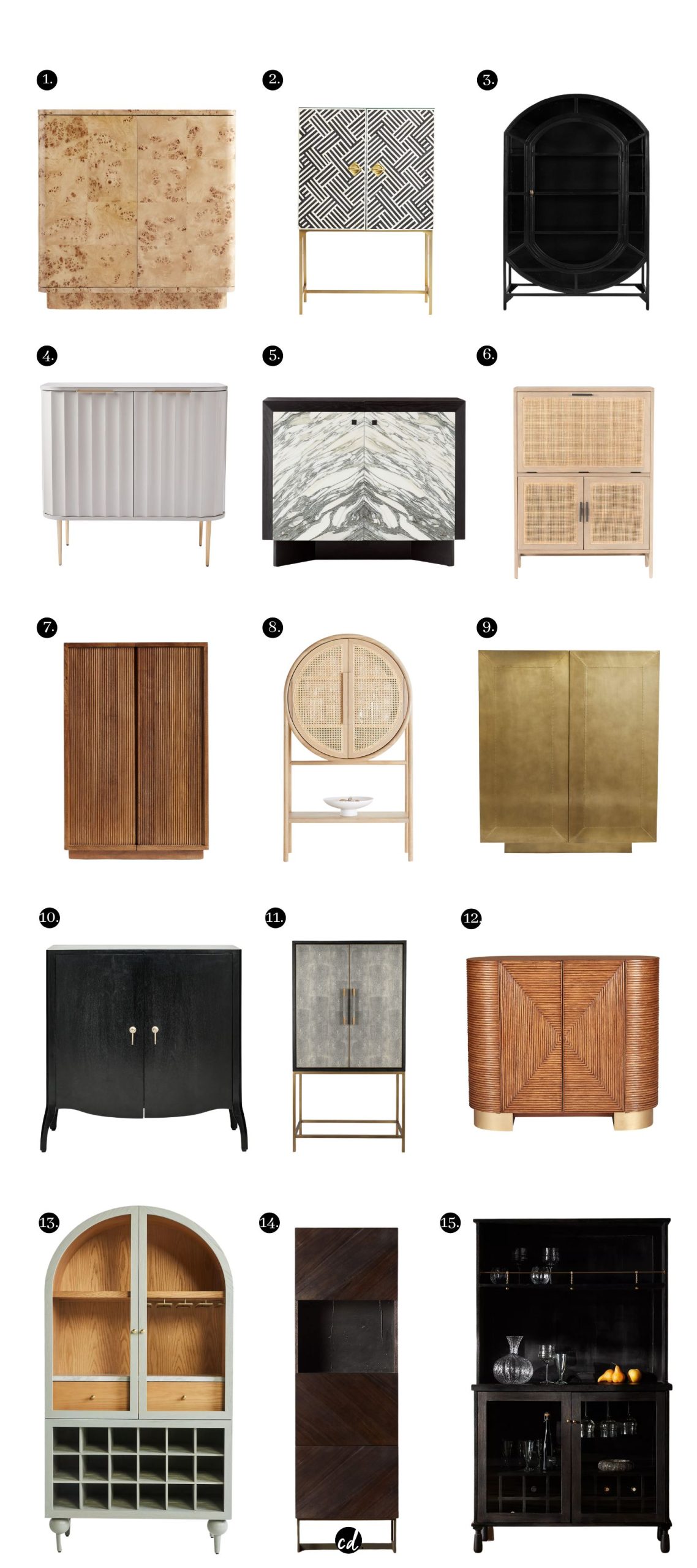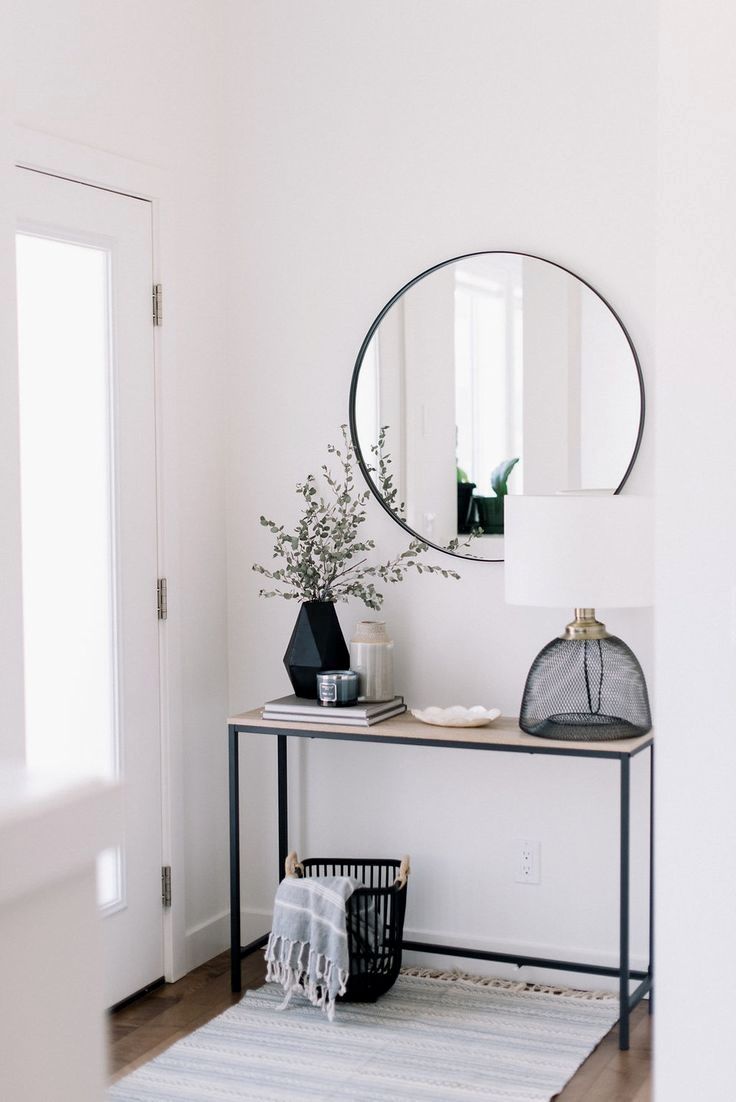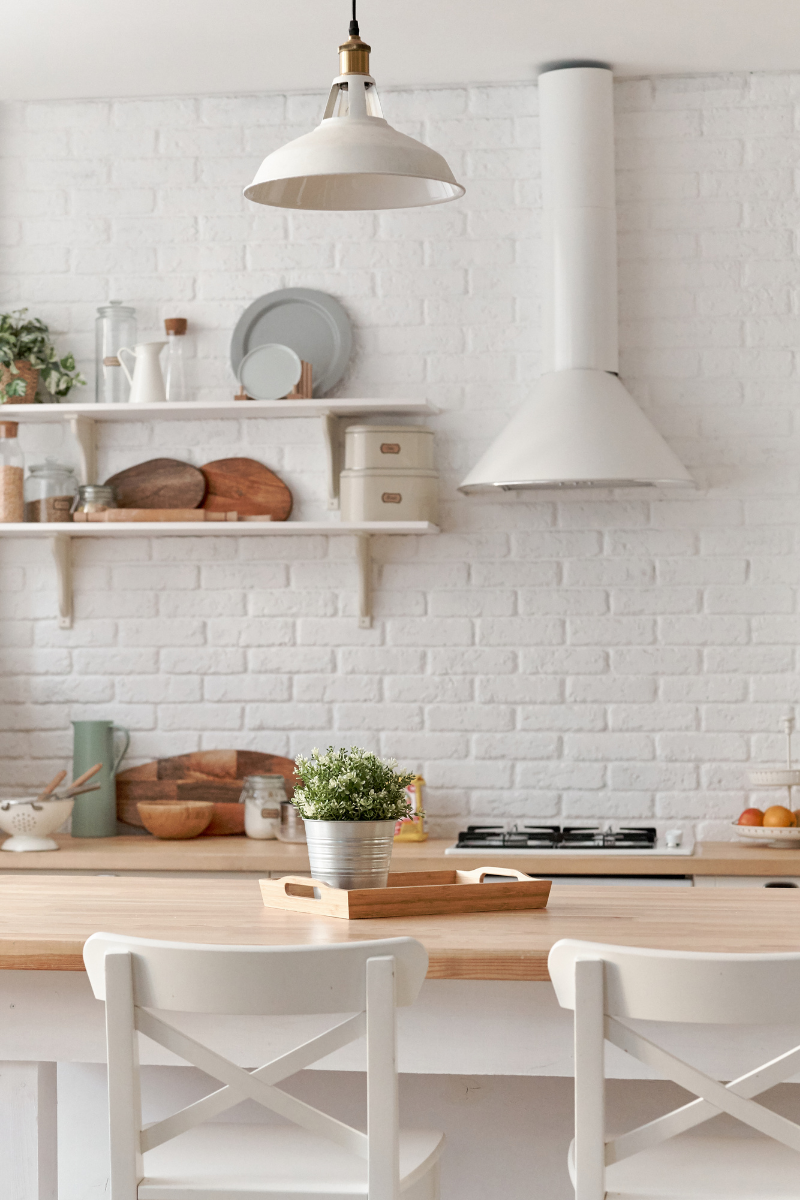9 Amazing Tips To Create Your Japandi Living Room
A lot of us are wanting to create a living room that’s practical and pretty in style. But also comfortable regardless of your family size. So it makes sense that the Japandi style is well suited to the living room space. Blending the practicality of the Japanese Wabi Sabi style with the beautiful comforts of the Western Scandinavian look.
To get the peaceful but functional look, here’s the main design tips to consider when creating a Japandi living room.
How To Design a Japandi Living room
1. Decluttering & Minimalism
Japandi is definitely one of the design styles that falls into the warm minimalist category. That doesn’t mean you have to go to the extreme with no decor and nothing on show. It does however mean minimal clutter. Which means good storage options are needed.
There are lots of different ways you can reduce visual clutter in a family living room.
This could mean using furniture that doubles up as storage. You could use a coffee table that has storage. Or choose a sofa that has hidden storage under the seating. Using attractive storage baskets will help in keeping clutter to a minimum. Make sure that storage baskets have a “home” and aren’t just sitting about randomly, to make it look organized and intentional.
The size of your living room will guide you in how creative you get with the storage. Or you’ll have to take serious inventory of what stays in your living room and what needs to be permanently removed.
Doing both will help everyone in the long run. And you’ll be able to stay on top of the organization for the future.
2. Simple Colour Palette
Japandi picks up from the neutral colour tones of nature. Because of the blend of the two interior design styles there’s various ways to go. With the Japanese element you can opt for mid to dark earthy tones for wall colours. From beiges, browns and even charcoals.
Or you can take inspiration from more the Scandinavian side. Choosing light and simple whites, creams and light greys.
Whatever your main colour choice for your walls, make sure there is some contrast between the walls and the furniture.
A strong contrast design would be white walls with dark grey or black furniture. But it doesn’t have to be that dramatic in contrast. You can choose a darker or lighter tone from the same colour range for interest. Adding pops of darker accent colours throughout the space will work too.
You can also use colours like pinks and greens. These colours pick up on the cherry blossoms of Japan and foliage from nature. Soft and muted tones take on a more Scandinavian feel. Whereas earthy greens lean towards the Japanese style.
Japandi Mood Board
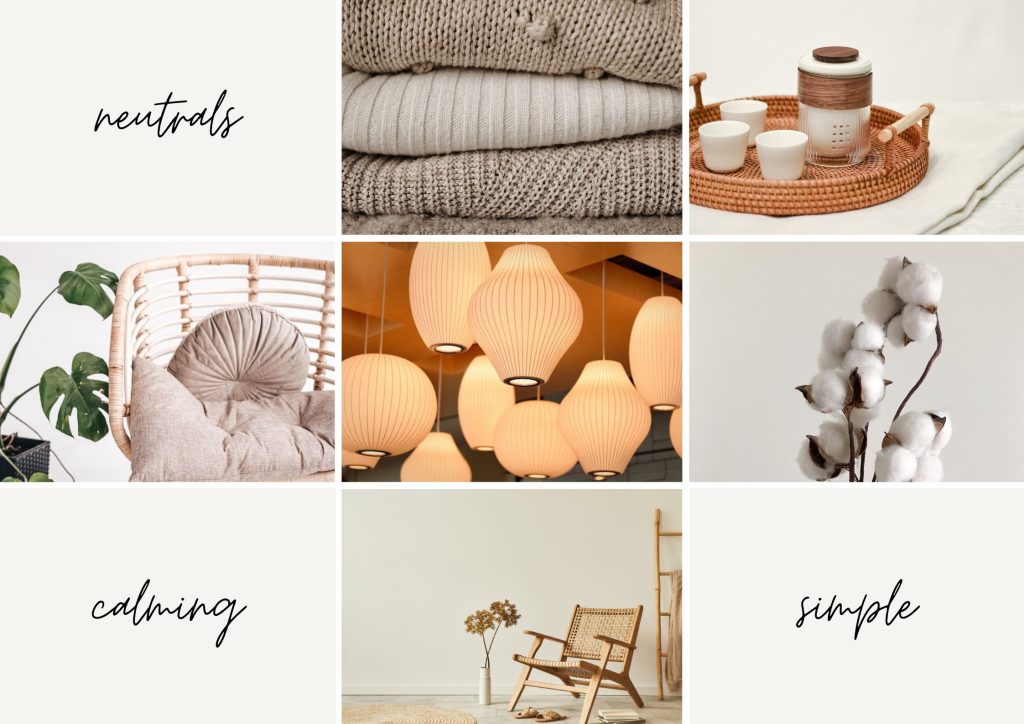
3. Japandi Design Style
Choosing furniture that doesn’t take up much visual space are the best pieces to pick for a Japandi living room area.
Pick pieces that are low to the ground. Furniture pieces that have a plinth base are good to use. And without a high backrest for sofas and accent chairs. Also furniture that is sitting on legs. You can do a mixture of both.
Don’t be afraid of mixing pieces that have different visual weights to them. A low solid coffee table can be placed in between an accent chair with legs.
By using these styles of furniture will achieve a light and airy look but will look interesting. This will open up your living room space and make it look and feel larger. And evokes a clean and uncluttered feel.
Furniture pieces of a simple shape and lines will give a clean look. Mixing old rustic styles and modern furniture works really well together.
You can go for curved or rectangular pieces. As long as the pieces aren’t fussy or too fancy. Using curved furniture pieces will help soften the room if you feel like everything is too angular.
Minimal decorative finishing if any for furniture pieces. I would incorporate ribbed or fluted furniture in at the most. Which is similar to a slat finish. A fluted wood material would be a great option. This is an understated elegant finish that works well for the Japandi style.
The minimalist aspect is shown various ways in the Japandi style and having minimal designed furniture is an important part as well.
4. Natural Materials
Japandi works so well because of the shared design traits of the two styles. Natural materials being one of them. Using wood materials should be a must in a Japandi living room. It’s up to you when deciding on the colour tones.
Scandinavian tends to be light to mid-washed wood tones. Like birch wood and white oak. And the Japanese Wabi Sabi style uses darker woods and stained finishes. Other materials to use in the wood family are rattan, wicker, paper, bamboo and cane pieces.
One of the main places to feature wood in a Japandi living room space would be the flooring. Or you can use wooden slats as a modern wall feature.
Other natural materials that can be used throughout include; stone, ceramics, glass, leather and some metal. When using metals opt for matte finishes like black iron. For soft furnishings use wool, cotton and linens for seating, cushions and decor.
Bring in as much natural light into your living room space as well. Nature also means making the most of your surroundings.
5. High Quality and Craftsmanship

High quality furniture goes hand in hand with choosing organic materials for your furniture and decor for the Japandi style. Sustainability is a core theme that runs through Japandi design.
The things you choose for your living room space should be built to last. And stand the test of time. Only replacing occasionally if at all. Less is more with this style so the pieces that you choose need to have impact. And be functional.
Original and one off handmade pieces are great to incorporate into your living room. Eco-friendly products tie into the natural aspect of Japandi design too.
6. Textured Layering
Like most minimalist styles the interesting details come together in the layering of natural materials. Mix in soft and rough textures together in your living room, through your furniture and soft finishings.
Building up different textures in the living room is how you create a more cozy and comfortable space. A space that you’re not afraid to use and that is welcoming and inviting. This part is definitely taken from Scandinavian style to create a warm minimalist look.
Mix in chunky knits, textured cushions with different shapes and colours.
Soft decor like cushions and throws are embraced in the Japandi style but don’t go overboard in this area. Some restraint is still needed in the decor area as well.
If you want to use a rug in your Japandi living room, also keep to natural materials like jute, seagrass and wool.
7. Functionality
Using items that can help change up your living room for different needs are a big bonus. And very much in the line of the Japandi design style.
Room dividers can help create different zones in open plan space. Sliding doors that can hide unused items like when the television isn’t on. Or close and open the flow to another room for family occasions. Modular seating can also provide great functionality and be moved to different locations.
8. Intentional Decor
Decor pieces should be well thought about and interesting. Pick sculptural pieces or meaningful objects that won’t get lost in the living room. Bring in plants and flowers that will bring in a different aspect or nature. Dried flower stems can add a nice sculptural element in Japandi space.
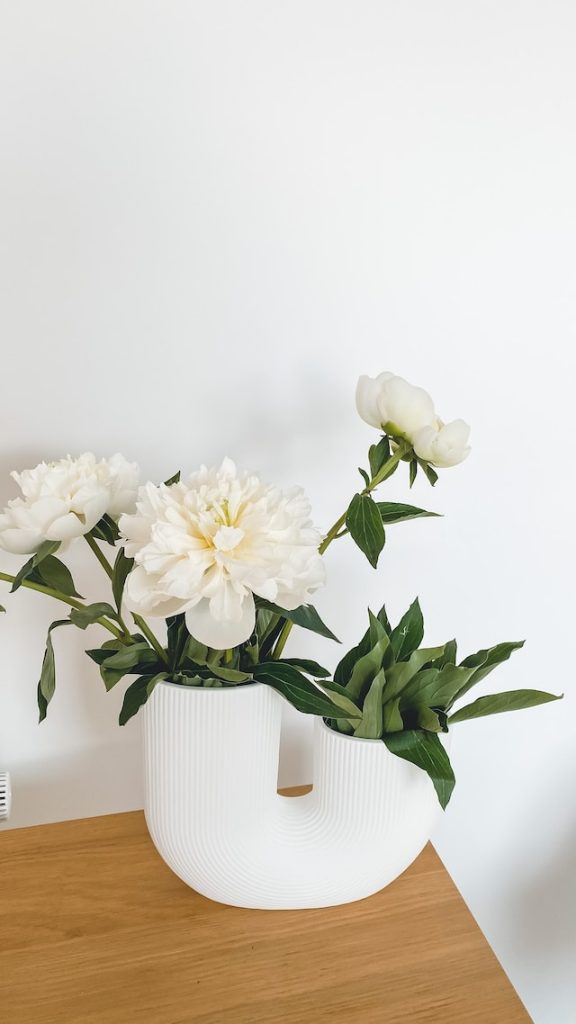
9. Japandi Lighting
For your living room it’s important to have different lighting sources. Overhead lighting provides a soft ambient light. Task lights and floor lights will provide direct light for side tables and next to seating.
For overhead lighting you can stick with organic materials. Paper pendants, woven and open shades help to keep an open feel to the living room. Task lights can be a more functional element like a metal finish.
To control the natural light in your living room, wooden shutters for the windows are a good option. Or you can use voile curtains.
Japandi Living Room: Final Tips
When creating a Japandi living room make sure the emphasis is on nature. This should be through using the right colours and materials. And letting lots of natural light in.
Remember organized doesn’t mean perfect. Perfectionism is not what Japandi is about but function plays a big part. So embrace flaws and think about what’s really needed in your living room. Have a good declutter first and think about how you’d like to use your living space.
Chloe
